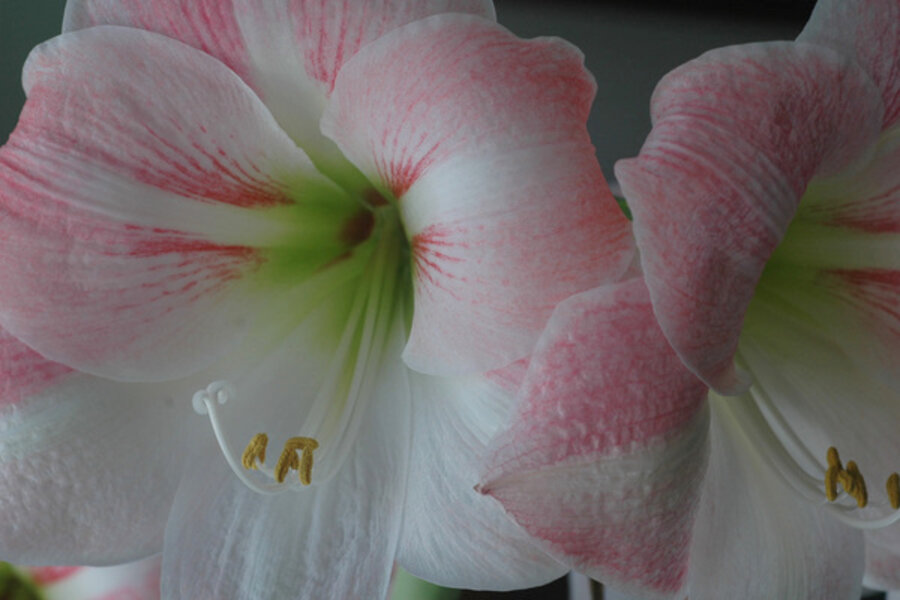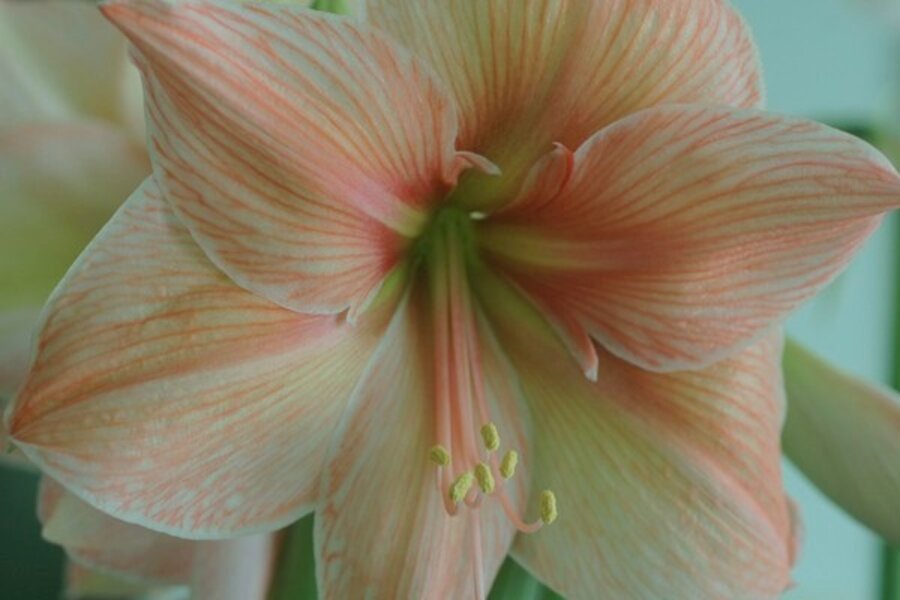Amaryllis bulbs: Bigger is better
Loading...
In the North, growing tropical amaryllis, Hippeastrum cultivars, consists of fussing over pots of flopping strap leaves for 11 months in order to enjoy a month of flowers.
Like Thalassa Cruso in her book "To Everything There Is a Season," I keep asking myself if amaryllis are worth the trouble. Last week, when I saw the plants of one of my Meals-on-Wheels recipients, the answer was an unambiguous “yes.”
Mr. E, my amaryllis grower, is a former nursery owner and farmer who, in his spare time, also played the organ for the local Methodist church. He’s 91 now. The greenhouses and tractors are gone and his fingers are stiff, but his urge to grow things persists. To paraphrase Douglas MacArthur, old gardeners never die, they just relocate to the dining-room table.
Big bulbs, big blooms
Some of Mr. E’s bulbs came from a friend who didn’t think they were worth keeping once they stopped blooming. “I babied them for three years,” he said, and now those bulbs are the size of baseballs.
All his amaryllis are at least 36 inches tall and have flower stems the diameter of a garden hose. They’re ramrod straight, topped with blooms that measure up to 10 inches across. I’ve never produced anything nearly as fine.
I’m a great believer in buying small trees and shrubs — they grow faster than larger ones and are less expensive — but when it comes to bulbs, bigger is better. You don’t have to order “mother bulbs,” which run $30 and more each, but don’t be tempted by “bargain bulbs.”
At a minimum, opt for “large” bulbs, which are 11 to 12 inches (28 to 30 cm) in diameter; even better are “extra large” bulbs, 12 to 13 inches (30 to 32 cm), each of which should produce two or three stems and at least a half-dozen flowers.
How to treat them
The bulbs you buy — they appear for sale in the fall and into winter — have been treated to a period of modest cooling and rest, a practice known as “forcing” that tricks bulbs into flowering early. When you get your hands on them, they already contain miniature leaves and flowers and the food they need to sprout and flower. They’re just waiting for you to add water, light, and warmth.
There are excellent step-by-step instructions for planting amaryllis bulbs and for getting them to flower again at the US National Arboretum website. Other experts may differ on small details, but everyone emphasizes the importance of giving plants as much sun as possible after they finish blooming; feeding and watering regularly; allowing leaves, no matter how ugly, to die back completely; and giving plants at least six weeks rest in a cool location.
It’s a bit of work to keep amaryllis blooming year after year, but, properly handled, bulbs will be the size of softballs in three or four years. And will turn your dining-room table into a garden.
-----
Karan Davis Cutler blogs regularly at Diggin’ It. She's a former magazine editor and newspaper columnist and the author of scores of garden articles and more than a dozen books, including “Burpee - The Complete Flower Gardener” and “Herb Gardening for Dummies.” She now struggles to garden in the unyieldingly dense clay of Addison County, Vt., on the shore of Lake Champlain, where she is working on a book about gardening to attract birds and other wildlife. To read more by Karan, click here.






